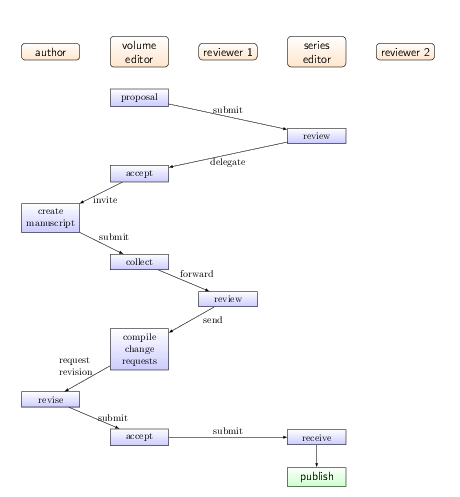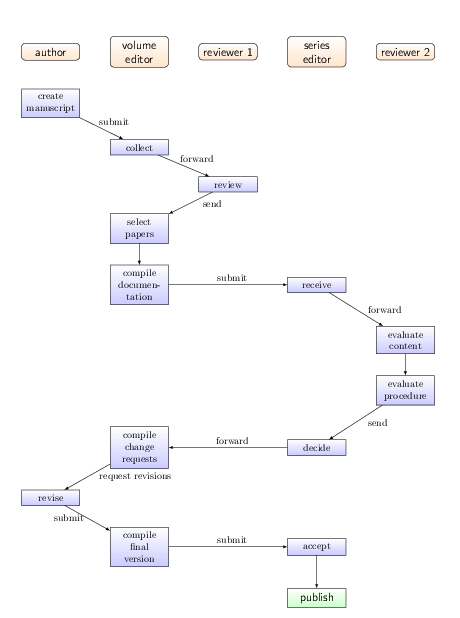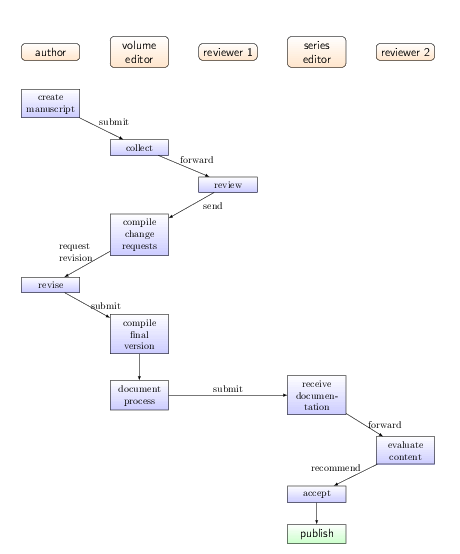Introduction
The review process of edited volumes is more complex than the review process of articles or books. The contributions to edited volumes are heterogeneous with regard to the quality of research and writing. The scientific merit of each contribution has to be assessed. Furthermore, the value of the volume should be greater than the sum of its parts. There should be an overarching theme tying the contributions together which will make it worthwhile for the reader to have the whole collection rather than only one article.
In the review process, it is important to distinguish the quality assurance of the individual articles from the assurance of the quality of the overarching volume. In this blogpost, I will detail several options how this can be achieved without imposing unnecessary friction or rounds of review. Some terminological conventions: the quality assurance of individual articles, I will call ”assurance of scientific merit”; the quality assurance of the edited volume as a whole, ”assurance of coherence”. I will furthermore distinguish between the authors of the individual contributions, the volume editor (VE) and the series editor (SE), assuming that the book will appear in a series like Studies in Diversity Linguistics.
The overall coherence of the volume depends on the content of the papers. Even if one or several papers were not of particularly high quality, this would not make the volume incoherent: there would simply be certain aspects of the theme of the volume that would be covered, but in a less than optimal way. This means that assurance of coherence can be done based on the volume proposal plus chapter abstracts. It would be very uncommon for an author to completely change the topic of their contribution between the initial abstract and the final contribution. When the VE submits the proposal+chapter abstracts to the SE, the SE has several ways of influencing the coherence:
- accept proposal
- reject proposal
- ask for modification of proposal (for instance, less theory-internal, wider coverage, …)
- ask for clearer focus of chapters to remove overlap
- ask for more focus in selection of chapters, possibly via the removal of
certain chapters
After this step is completed, the authors create the initial versions of the chapters, which have to undergo the assurance of scientific merit. This is where things get complicated. The following problems have to be addressed:
- bad science or unreadable papers should not be published
- the process should not take too long
- there should ideally be only one round of revisions. Implementing revisions suggested by a reviewer only to be told by a later reviewer that these revisions were unnecessary and should be undone is one of the most frustrating experiences in science.
- reviews should have an impact. Do not ask for reviews if you are going to accept/reject the work anyway.
It is typical for edited volumes that papers get reviewed by the other contributors, who are often also specialists in the very narrow domain the book is about. Nevertheless, appeal to a broader readership is also important. Therefore, the internal review is often complemented by an external reviewer. There are three ways to assure the scientific merits of the papers in an edited volume. I will call them the ”Delegated system”, the ”Compliance system” and the ”Two Reviews System”.
Delegated review
In the delegated system, the SE entrusts the VE with the assurance of the scientific merit. This is similar to the role of a guest editor for special issues of journals. The SE values the opinion of the VE and accepts their judgment as to which papers are valuable without further ado.
Compliance review
In the compliance system, the VE submits all initial papers, the reviews and the revised version to the SE. The SE then sends this collection out for compliance review. Compliance review means that the reviewers should check for whether the established best practices have been adhered to. Has each paper been reviewed? Were the reviewers independent? Are the reviews thorough? Have the reviewers recommendations been followed? The compliance reviewers are not requested to evaluate the scientific merit again. Their task is rather a kind of ”meta-evaluation” whether due process was followed.
Two reviews-systems
The two review system comes in two kinds. The first kind is the ”Early Two Reviews System”, the second kind is the ”Late Two Reviews System”.
Early Two Reviews System
In the Early Two Reviews System, the VE submits all initial submissions they wish to include together with the reviews to the SE. The SE then gets reviews for that material and decides whether to accept the submission. The early two review system is similar to the Compliance System in that the reviewer gets to see the first round of reviews. If this second-level reviewer recommends acceptance, the SE informs the VE that the first-level reviews can be sent to the authors. The book counts as accepted. The incorporation of the changes by the authors is subsequent to this. The final version of the edited volume is sent to the Series editor and counts as accepted. In that sense, the Early Two Review System is similar to the Delegated System because a rejection is no longer possible at that point in time.
Late Two Reviews System
The late two reviews system differs from the Early Two Reviews System in that the version sent to the second tier reviewers is not the initial one, but the one which already incorporates the first-tier reviewers’ comments. This will make it easier for the second-level reviewer to judge the papers, but it can also lead to frustration if the book ends up being turned down and the authors’ work on revising the papers based on the first-tier comments was for nothing. Second level reviewers in the Late Two Reviews System only judge the global scientific merit of the final volume. A judgment of the procedure is then not necessary.
Summary
This blogpost has detailed the workflow for different systems of reviewing edited volumes. It is clear that different subdisciplines of linguistics will prefer one or the other. It is hoped that this typology will make it clearer which workflows are preferred in particular disciplines and maybe also give some arguments in favour of one or another of the presented workflows.
The tikz-code for the flowcharts is available at https://www.overleaf.com/read/cmktjddkfrjm




